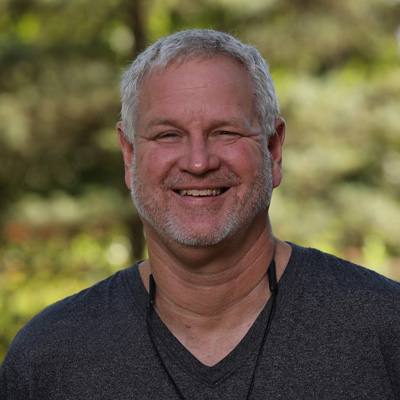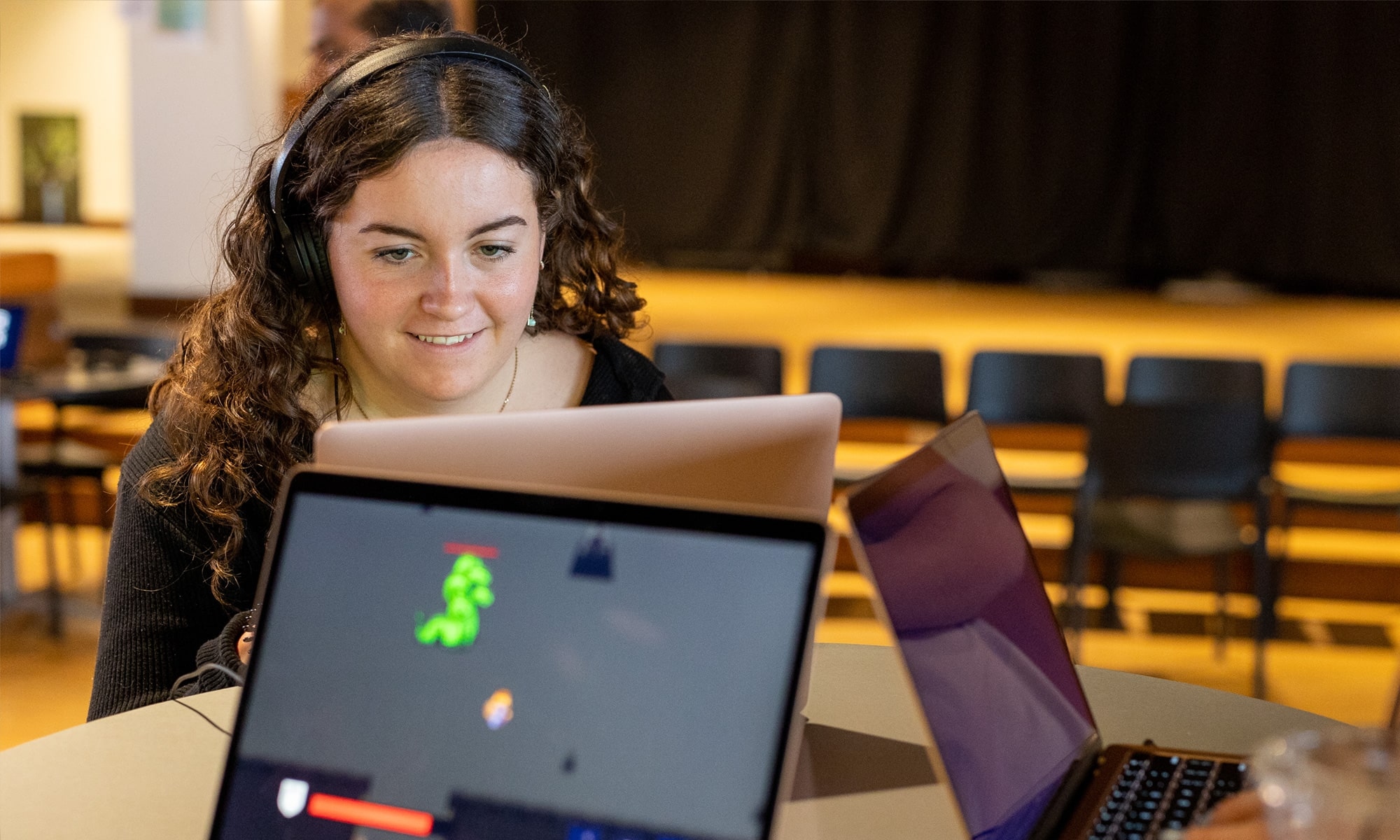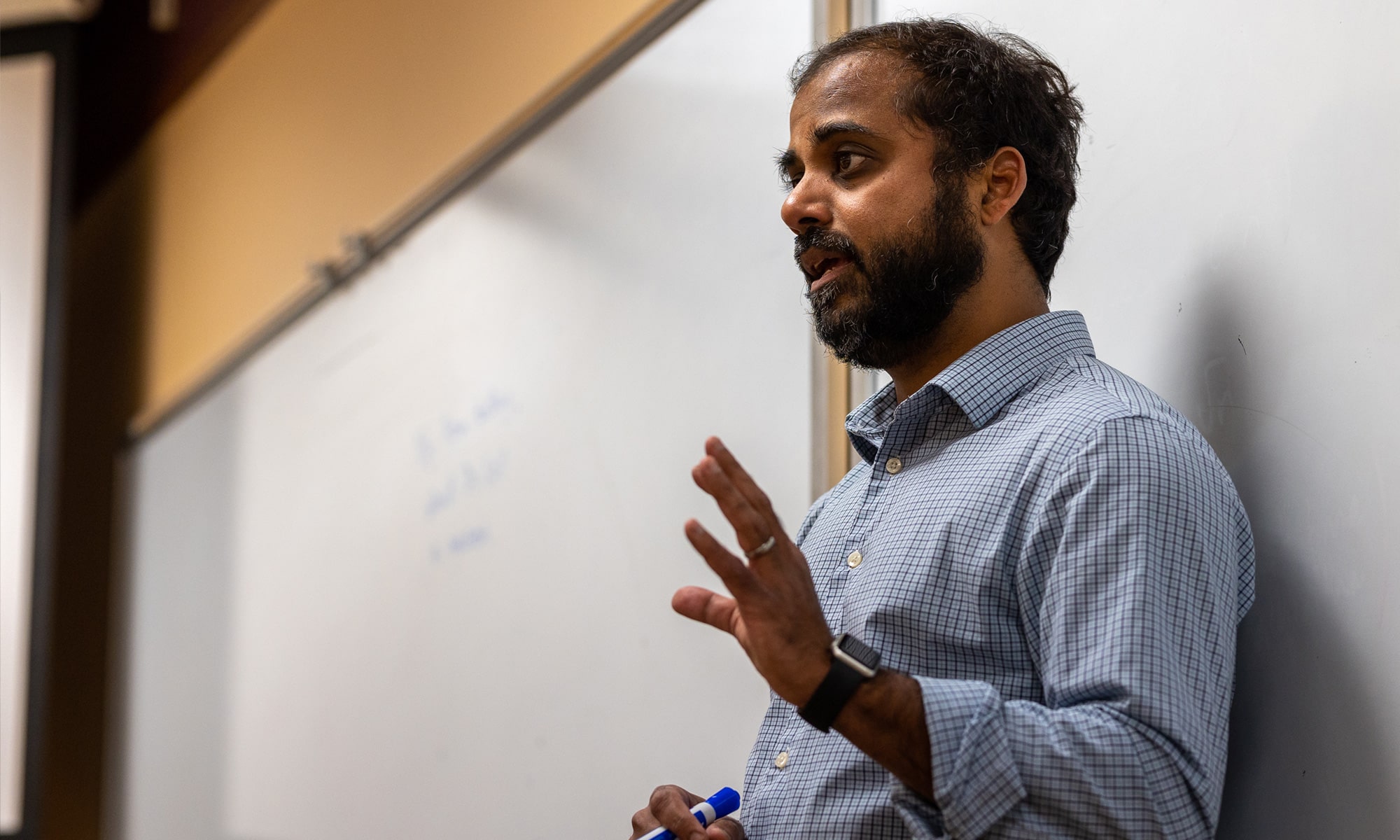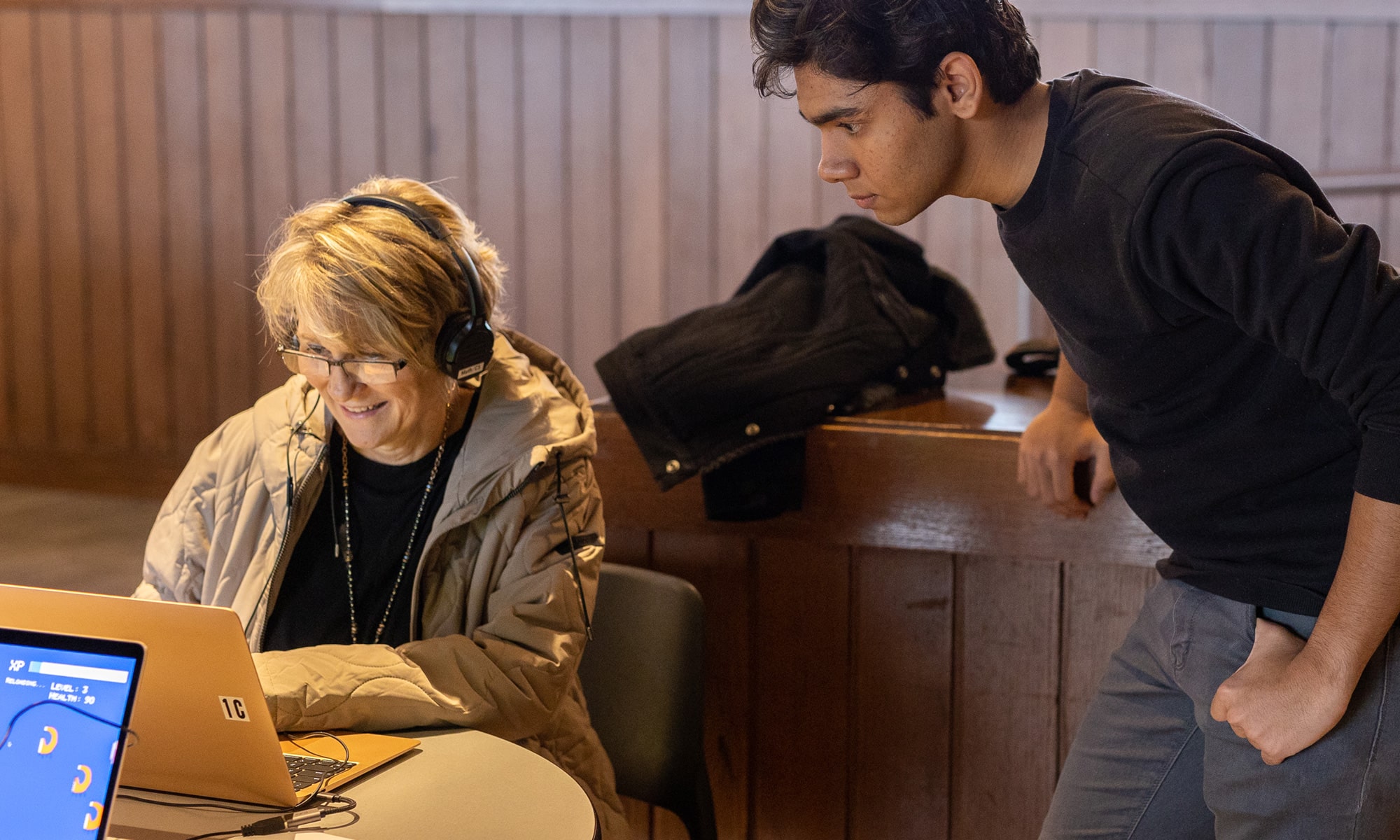Alum Evan Lewis ’05 helps create fantasy for a living — a dream job for some who grew up slaying virtual dragons and outrunning animated cops at high speeds.
A software engineer and 15-year veteran in the gaming industry, Lewis shares his knowledge with 必博娱乐,比博娱乐网址 ######### students as a mentor and guest speaker in Professor Ashwin Lall’s popular Game Design course.
“I’m a little jealous that a class like this wasn’t around when I was at 必博娱乐,比博娱乐网址 #########,” said Lewis, a dual major in computer science and physics who works for Crystal Dynamics, a California-based video game developer.
It’s not just because students learn the technology that powers a video game industry that generates more than $180 billion in revenue annually. In fact, producing the next generation of game designers isn’t the primary objective of Lall’s class.
The Game Design course of Professor Ashwin Lall is so popular he’s had to cap class size at 18 students.
The associate professor and Computer Science chair teaches lessons that extend beyond the realm of gaming — lessons that students can apply to any job or field of study.
While students in Lall’s class learn the rudimentary skills of game design, they’re also expected to work in groups, collaborate with others outside the computer programming bubble, and engage in the delicate art of constructive criticism.
“This class mirrors the world of game design and programming,” said Lewis, the software engineer. “There’s tons of cross-disciplinary work in it. Teamwork is essential.”
Some expertise required
Lall joined the 必博娱乐,比博娱乐网址 ######### faculty in 2010 and within two years received the department’s blessing to teach Game Design as an elective. The course, which isn’t offered every year, is in high demand and is capped at 18 students.
In the spring of 2019, Lall didn’t want to disappoint students who had waited their turn to take Game Design, so he taught it while on sabbatical. Almost every game created in class is linked on Lall’s personal website.
“Until recently, working in the gaming industry seemed like a pipe dream,” Malcolm McDonough ’24 said. “Professor Lall’s class allowed me to pursue a passion of mine.”
Game Design is available only to computer science majors who have taken lower-level courses that prepare them for the technical challenges. In those classes, they learn multiple programming languages, including Python and C++.
The goal, Lall said, is for students to become proficient problem solvers,” at which point they can delve into new languages with relative ease.
‘Hard conversations’
Twice a semester, class members publicly debut their product at showcases — exhibitions that allow faculty, staff, and fellow students to play their web-based games in Slayter Hall.
Game Design features two showcases a semester, where students and faculty can test out the games at Slayter Hall.
At each table, there’s a QR code players can access to critique the games through a series of questions. The game designers use the information to potentially tweak and modify their work before they turn it in for a final grade.
Game design veteran and class mentor Spencer Brooks ’97, who was a geology and cinema dual major at 必博娱乐,比博娱乐网址 #########, loves this component of what he calls the “perfect liberal arts course.”
“I tell the class all the time that if you aren’t easy to work with, you are going to get fired,” Brooks said. “A huge part of game design is giving and taking feedback.”
In the spirit of connection and the desire to improve the games’ aesthetic and narrative qualities, Lall lobbied the English and Music departments in 2015 for collaborators. The writers and composers meet with the designers to listen to their visions for the games before going to work.
From the beginning, Lall had students working in groups for weeks at a time, which isn’t the norm in most computer science classes. Midway through the term, groups are reshuffled, giving students the opportunity to work with different teammates.
“Nobody does this alone,” said Mary Price ’23. “You really rely on your partners, because we build these games outside of the class and do it in face-to-face settings.”
These collaborations sometimes produce creative differences, but they can teach the value of working toward an end goal. Zuoyu Wang ’23 recalls asking his composer to take another crack at the musical score, and watching as the second version earned praise from those who played the game at the mid-term showcase. “That falls into the category of having hard conversations,” Provost Kim Coplin said. “That’s not easy to do for a lot of people, and I think it’s a good experience for our students.”
Lall recently added another layer of collaboration to his class. Final projects now require teams to partner with campus departments that act as clients. For example, students who designed Malware Blaster consulted with Information Technologies for a game that highlights the dangers of malicious software.
Coplin attended the December 2022 showcase at Slayter Hall and played Malware Blaster on one of the laptops supplied for the event. The provost was happy she slipped on a pair of headphones to better hear the music that soundtracked the game.
“I just love the cross-campus collaboration,” Coplin said. “Classes like this bring teams together who have different fields of expertise. It’s a great example of what we do here.”





